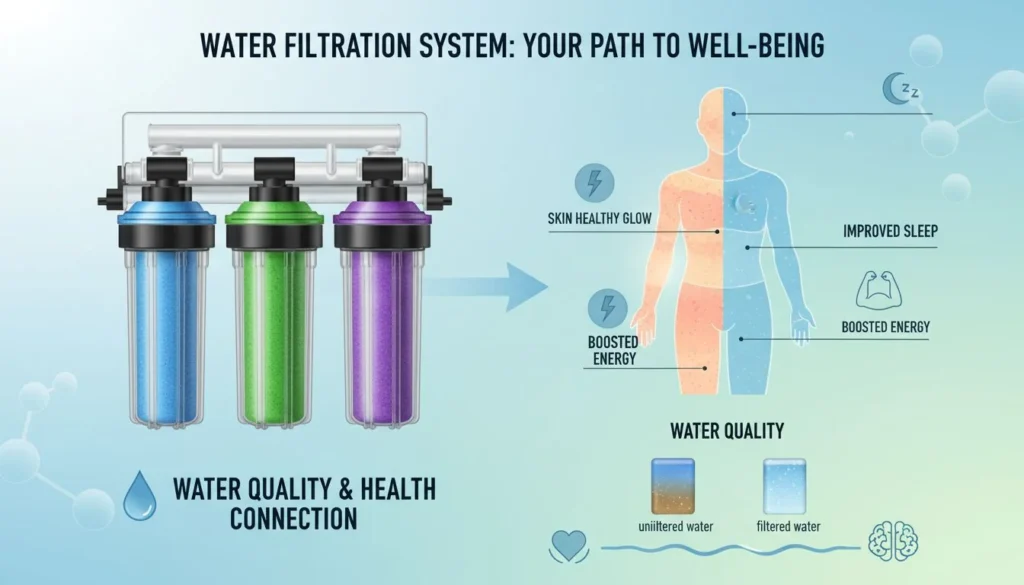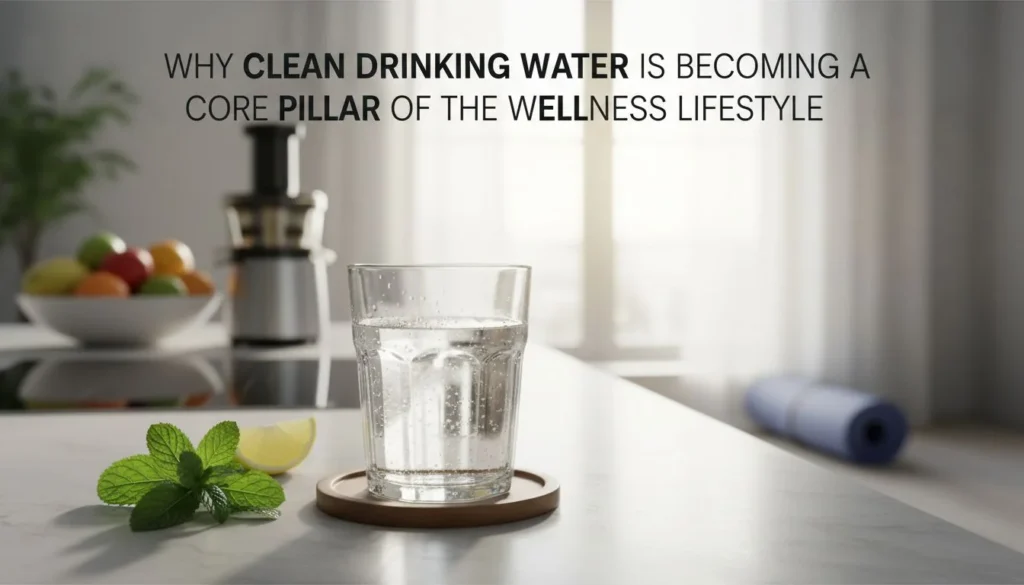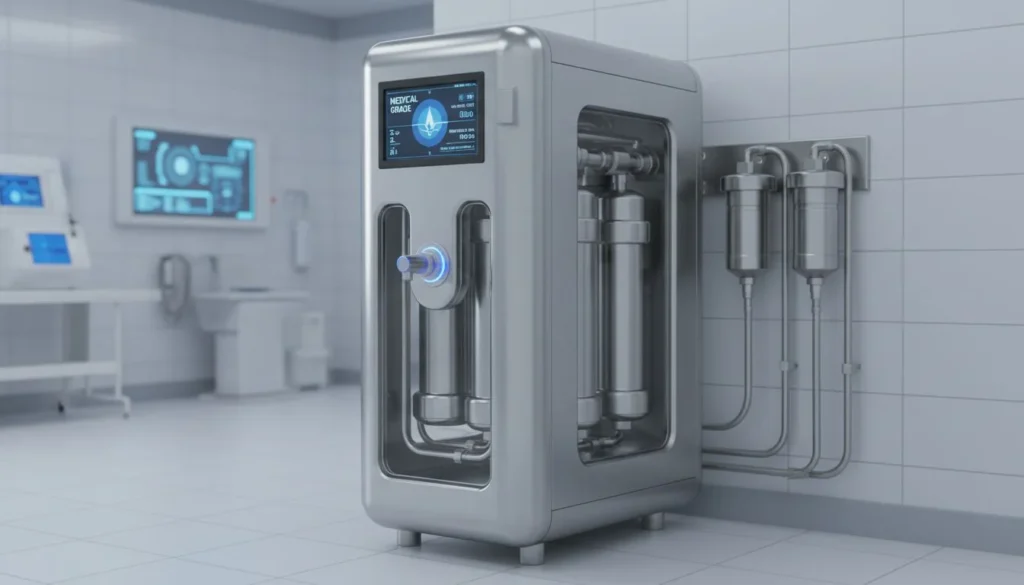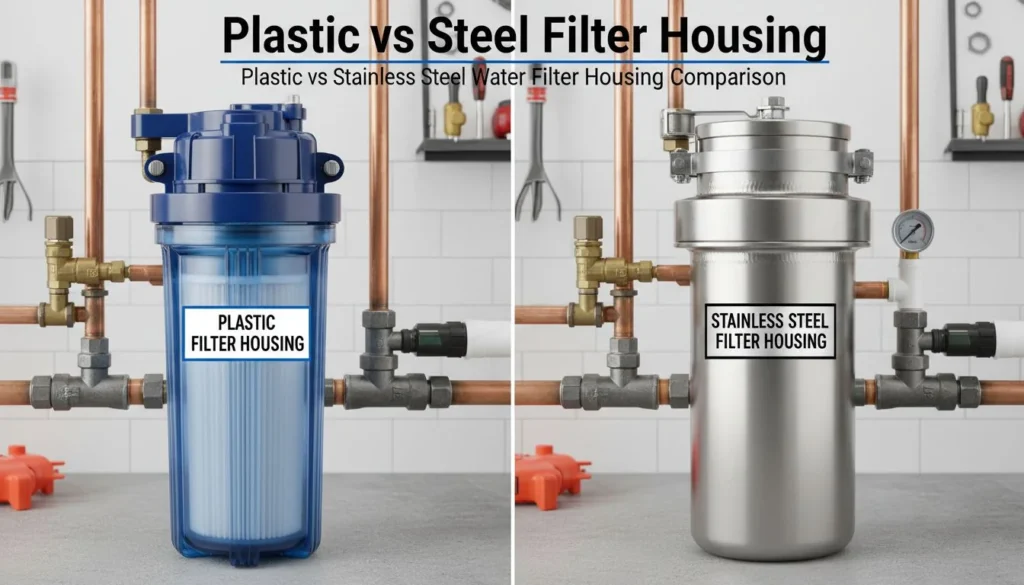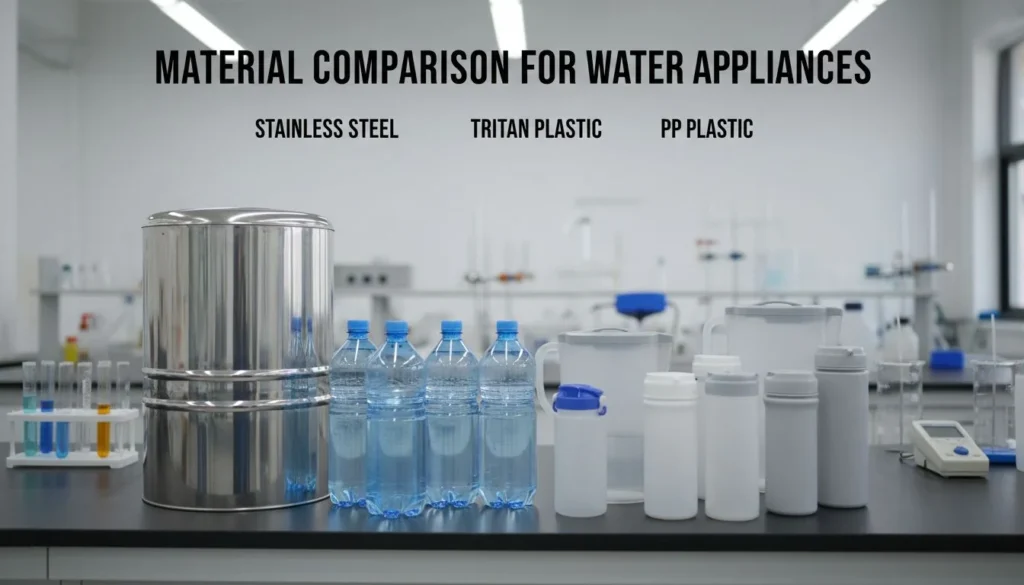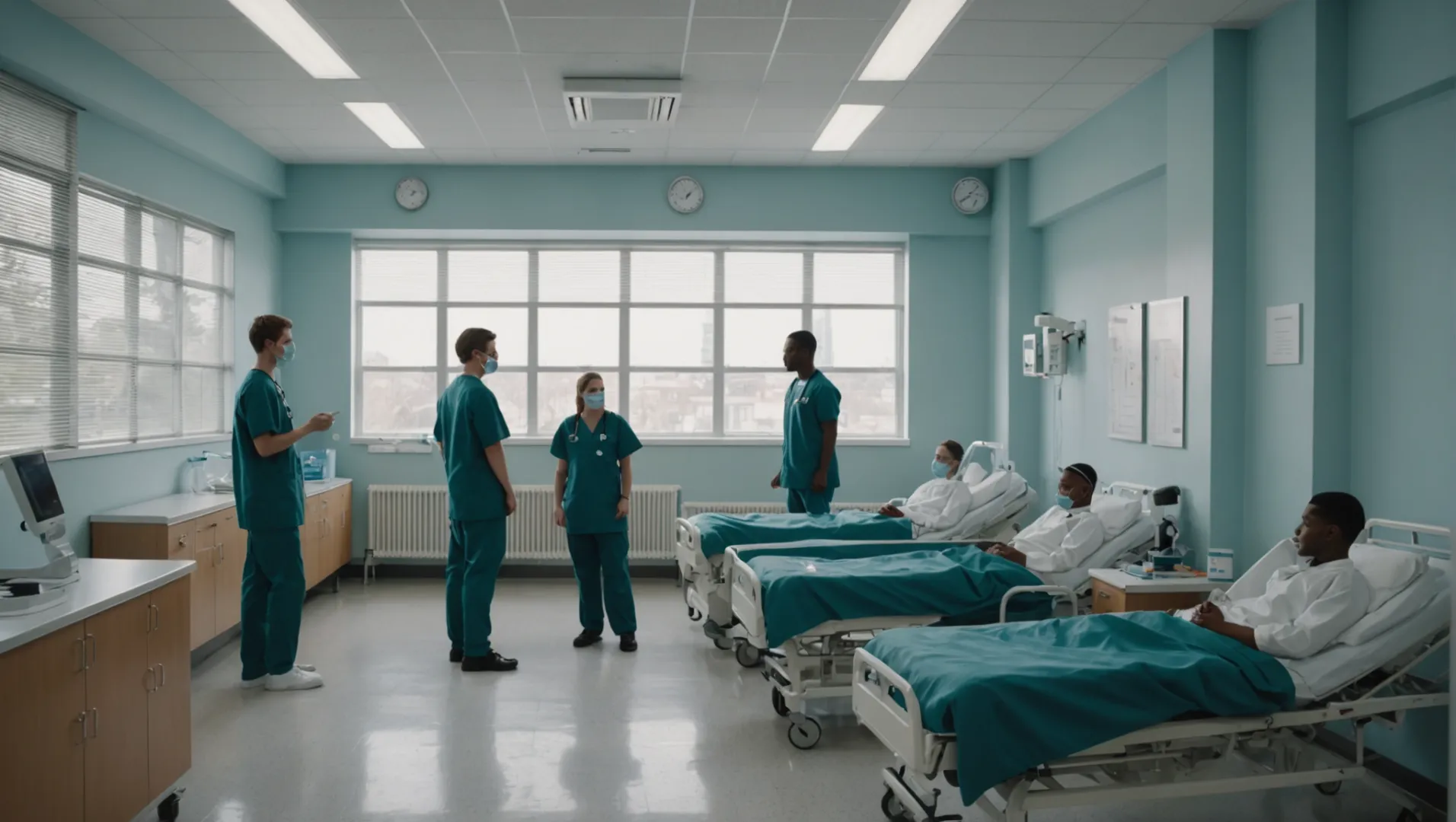
La gestion de la qualité de l'air dans les écoles et les hôpitaux peut sembler insurmontable, surtout lorsque les budgets sont serrés.
Pour réduire efficacement les coûts de maintenance des purificateurs d'air, il convient d'investir dans des filtres à haute efficacité qui prolongent la durée de vie, de choisir des unités murales pour minimiser les risques et d'acheter directement auprès de fabricants tels que HisoAir. Intégrer IdO pour des rappels de maintenance en temps utile permet également d'optimiser l'utilisation du budget.
Si ces mesures constituent une approche directe de la réduction des coûts, la compréhension de l'impact plus large de ces stratégies peut conduire à des économies encore plus substantielles. Découvrez comment ces solutions pratiques peuvent transformer la gestion de la qualité de l'air dans votre établissement.
Les filtres à haute efficacité réduisent les coûts d'entretien des purificateurs d'air.Vrai
Ces filtres durent plus longtemps, ce qui réduit la fréquence et les coûts de remplacement.
Quels sont les avantages des filtres à haute efficacité ?
Comprendre les avantages des filtres à haute efficacité peut révolutionner la gestion de la qualité de l'air dans les grandes installations.
Les filtres à haute efficacité offrent une durée de vie prolongée, des coûts de maintenance réduits et une meilleure qualité de l'air en capturant davantage de polluants. Ils sont idéaux pour les écoles et les hôpitaux où la qualité de l'air est cruciale pour la santé et la gestion du budget.
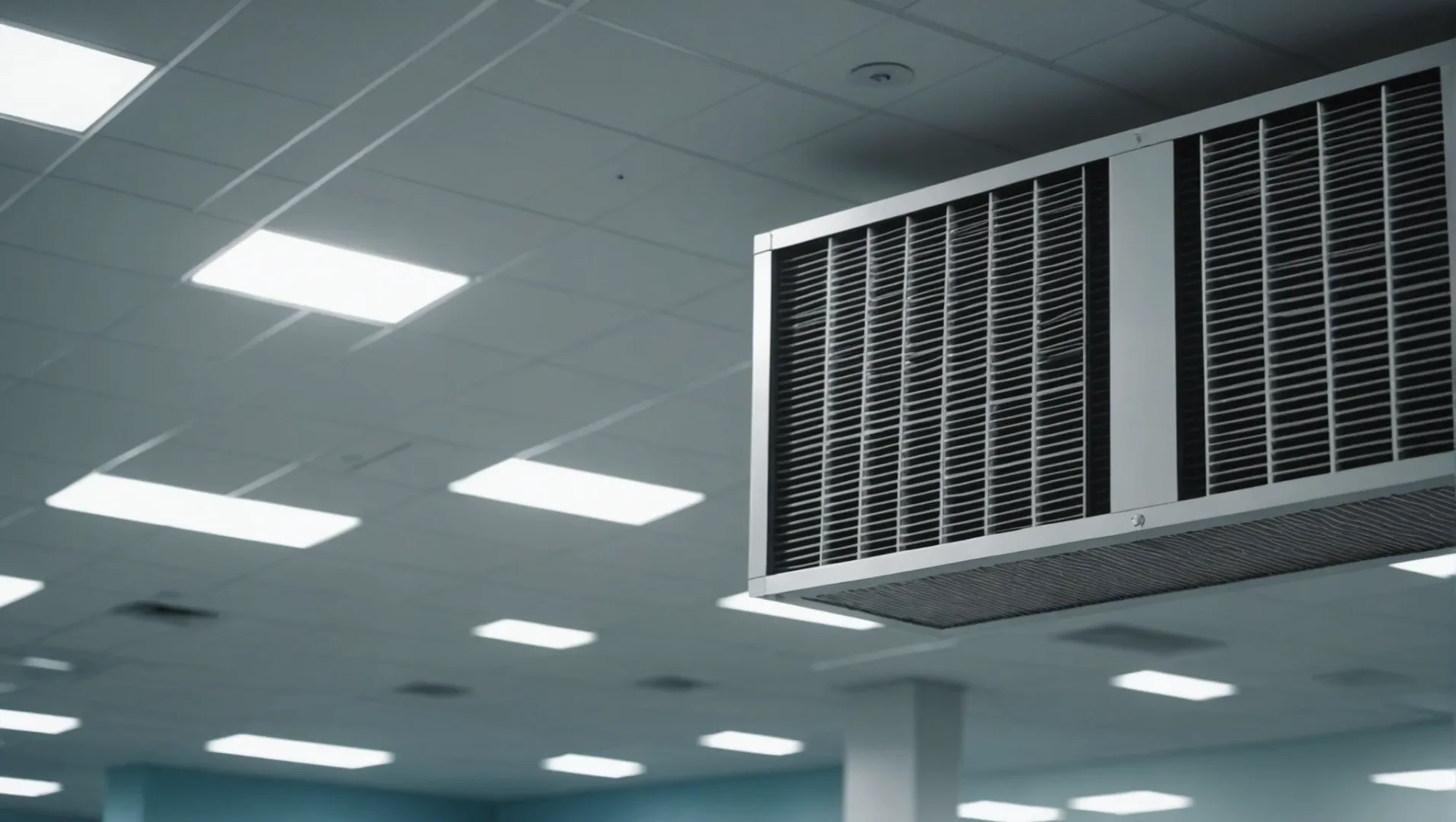
Durée de vie prolongée et économies de coûts
Les filtres à haute efficacité peuvent prolonger considérablement la durée de vie des systèmes de purification de l'air. Alors que les filtres traditionnels doivent être remplacés tous les six mois, les options à haute efficacité peuvent durer un an ou plus. Cette prolongation réduit la fréquence et le coût de remplacement des filtres, ce qui permet de réaliser des économies substantielles sur les budgets d'entretien. Par exemple, l'achat de filtres directement auprès de fabricants tels que HisoAir1 peuvent encore réduire les coûts en éliminant les marges des intermédiaires.
Amélioration de la qualité de l'air
Ces filtres capturent un pourcentage plus élevé de particules en suspension dans l'air, notamment la poussière, le pollen, les spores de moisissure et les bactéries. Grâce à leur capacité de filtration supérieure, ils sont particulièrement utiles dans des environnements tels que les écoles et les hôpitaux, où la pureté de l'air est primordiale pour protéger les populations sensibles telles que les enfants et les patients. En améliorant la qualité de l'air intérieur, ces filtres contribuent à créer des environnements plus sains, réduisant potentiellement l'absentéisme lié à la maladie dans les écoles et facilitant le rétablissement des patients dans les hôpitaux.
Progrès techniques
La technologie qui sous-tend les filtres à haute efficacité a considérablement évolué au cours de la dernière décennie. Les innovations dans le domaine des médias filtrants avec un débit d'air pur plus élevé (CADR) permettent à ces filtres de traiter de plus grands volumes d'air de manière plus efficace. Avec une masse propre cumulée (CCM), ils conservent des performances optimales sur de longues périodes, offrant une protection constante contre les contaminants de l'air.
Impact sur l'environnement
En réduisant la fréquence de remplacement des filtres, les filtres à haute efficacité contribuent également à la durabilité environnementale. Moins de remplacements signifie moins de déchets générés, ce qui va dans le sens des initiatives écologiques et réduit l'empreinte carbone de l'établissement. Les installations engagées dans le développement durable peuvent intégrer ces filtres dans leurs stratégies environnementales plus larges.
Considérations pratiques sur la mise en œuvre
Lors de la mise en place de filtres à haute efficacité, il est essentiel de tenir compte de la compatibilité avec les systèmes de purification de l'air existants. Certains systèmes peuvent nécessiter des ajustements ou des mises à niveau pour s'adapter aux normes de filtration plus élevées. En outre, l'intégration de IdO Les technologies de surveillance des performances des filtres permettent d'assurer la maintenance et le remplacement des filtres en temps voulu, maximisant ainsi l'efficacité et la rentabilité.
Les filtres à haute efficacité durent plus d'un an.Vrai
Ils prolongent la durée de vie des systèmes d'air, d'un an ou plus.
Les filtres à haute efficacité augmentent la production de déchets.Faux
Ils réduisent les déchets en diminuant la fréquence des remplacements.
Pourquoi choisir un purificateur d'air mural plutôt qu'un purificateur d'air portable ?
Lorsqu'il s'agit de maintenir une qualité d'air optimale, le choix entre un purificateur d'air mural et un purificateur d'air portable peut avoir un impact significatif sur l'efficacité et le coût.
Les purificateurs d'air muraux offrent une sécurité accrue, une durée de vie prolongée des filtres et un meilleur rapport coût-efficacité que les unités portables, ce qui les rend idéaux pour les écoles et les hôpitaux.
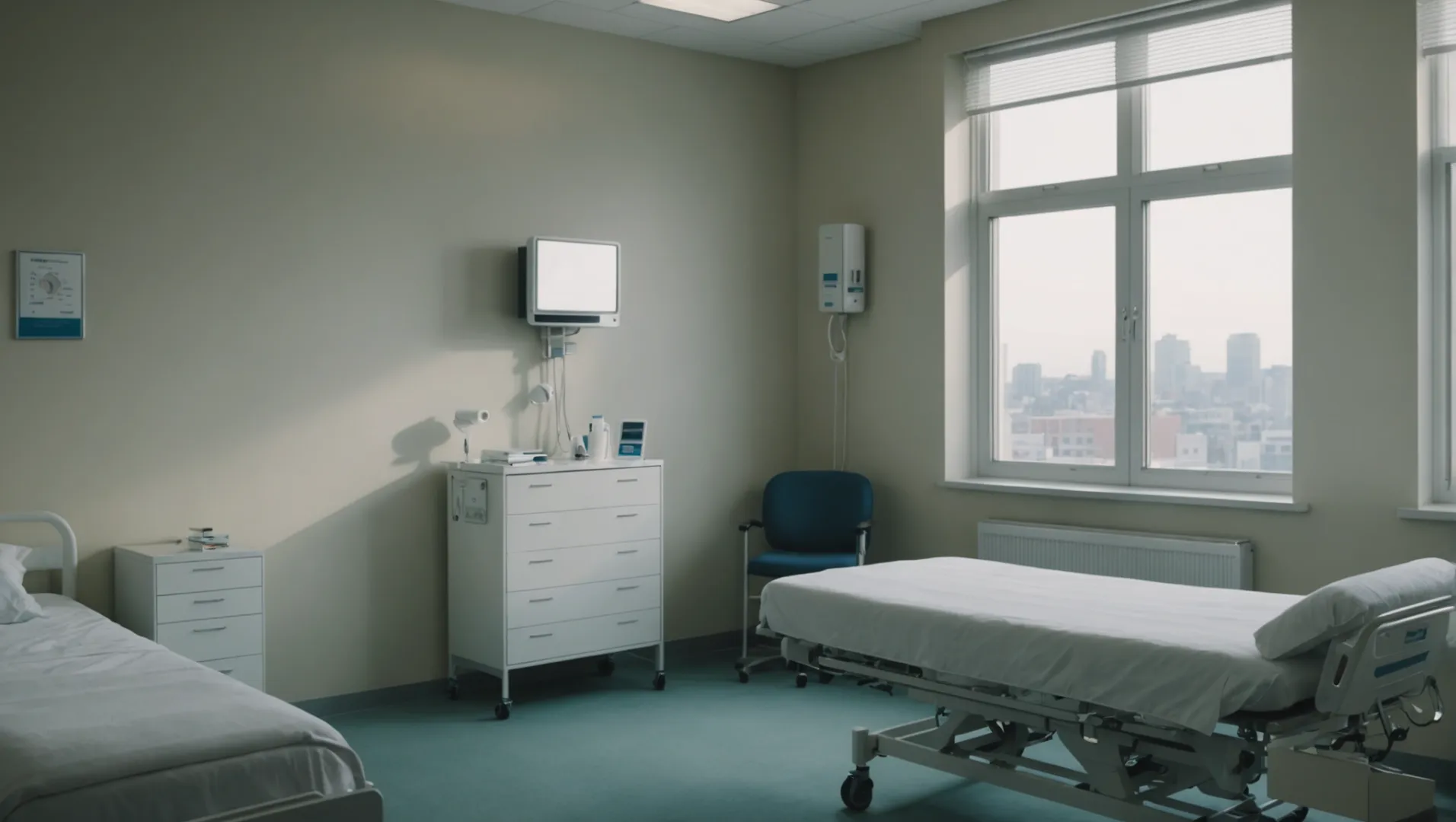
Sécurité et efficacité de l'espace
Les purificateurs d'air muraux sont installés en toute sécurité à une hauteur qui minimise les interférences, en particulier dans des environnements tels que les écoles et les hôpitaux où l'espace au sol est limité. Ils sont moins susceptibles d'être endommagés ou manipulés accidentellement, ce qui réduit les risques potentiels pour la sécurité et garantit un fonctionnement régulier sans interruption.
En revanche, purificateurs d'air portables2 peuvent être facilement renversés ou bloqués par des meubles, ce qui peut compromettre leur efficacité et entraîner des besoins d'entretien plus fréquents.
Maintenance rentable
Les unités murales nécessitent généralement des remplacements de filtres moins fréquents, ce qui contribue à réduire les coûts à long terme. Les filtres de ces systèmes ont souvent une durée de vie plus longue grâce à l'optimisation des flux d'air qui empêche le colmatage et l'usure.
Une étude comparant les coûts de maintenance a révélé que les installations utilisant des unités murales peuvent prolonger la durée de vie des filtres de 6 mois à plus d'un an, ce qui se traduit par des économies significatives. L'achat de filtres de remplacement directement auprès de fabricants comme HisoAir permet de réduire encore les coûts.
Amélioration de l'intégration des technologies
Avec les progrès réalisés dans le domaine de la IdO Les purificateurs d'air muraux peuvent être facilement intégrés dans les systèmes existants pour contrôler la qualité de l'air intérieur. Cette intégration permet la collecte de données en temps réel et l'envoi d'alertes automatiques pour le remplacement des filtres, ce qui garantit un fonctionnement optimal des unités tout en réduisant les contrôles de maintenance inutiles.
Cette caractéristique est particulièrement avantageuse dans les environnements très fréquentés tels que les hôpitaux et les écoles, où une qualité d'air constante est cruciale. IdO L'intégration facilite une gestion transparente, permettant aux gestionnaires d'installations d'allouer efficacement les ressources sans sacrifier les normes de qualité de l'air.
Considérations pratiques pour les écoles et les hôpitaux
Dans les établissements d'enseignement et de soins de santé, la priorité est toujours la sécurité et l'hygiène. Les purificateurs d'air muraux, grâce à leur positionnement, permettent non seulement de purifier efficacement l'air, mais aussi de s'assurer que les appareils sont hors de portée des étudiants ou des patients. Cela réduit le risque de contamination ou d'interférence.
En outre, ces unités sont généralement plus silencieuses que les modèles portables, ce qui minimise les distractions et favorise un environnement paisible propice à l'apprentissage et à la guérison.
| Fonctionnalité | Montage mural | Portable |
|---|---|---|
| Sécurité | Haut (hors de portée) | Faible (facilement accessible) |
| Durée de vie du filtre | Prolongé | Standard |
| Coût | Moins élevé à long terme | Plus élevé à long terme |
| Intégration | IdO compatible | Limitée |
| Niveau de bruit | Faible | Variable |
Pour les décideurs qui envisagent des mises à niveau ou des installations dans des environnements sensibles, ces facteurs illustrent clairement pourquoi les purificateurs d'air muraux constituent un choix prudent.
Les purificateurs muraux ont une durée de vie plus longue.Vrai
L'optimisation du flux d'air dans les unités murales prolonge la durée de vie des filtres et réduit les coûts.
Les purificateurs portables sont moins sûrs dans les écoles.Vrai
Les unités portables peuvent être renversées, ce qui présente des risques pour la sécurité dans les environnements très fréquentés.
Comment IdO Intégration Optimiser l'entretien des purificateurs d'air ?
Imaginez un monde où vos purificateurs d'air vous avertissent efficacement lorsqu'une maintenance est nécessaire, ce qui simplifie les opérations dans les écoles et les hôpitaux.
IdO L'intégration améliore la maintenance des purificateurs d'air en offrant une surveillance en temps réel et des alertes opportunes, garantissant que les filtres sont remplacés avant que leur efficacité ne diminue. Cette approche proactive optimise la qualité de l'air, réduit les contrôles manuels et prolonge la durée de vie des équipements.
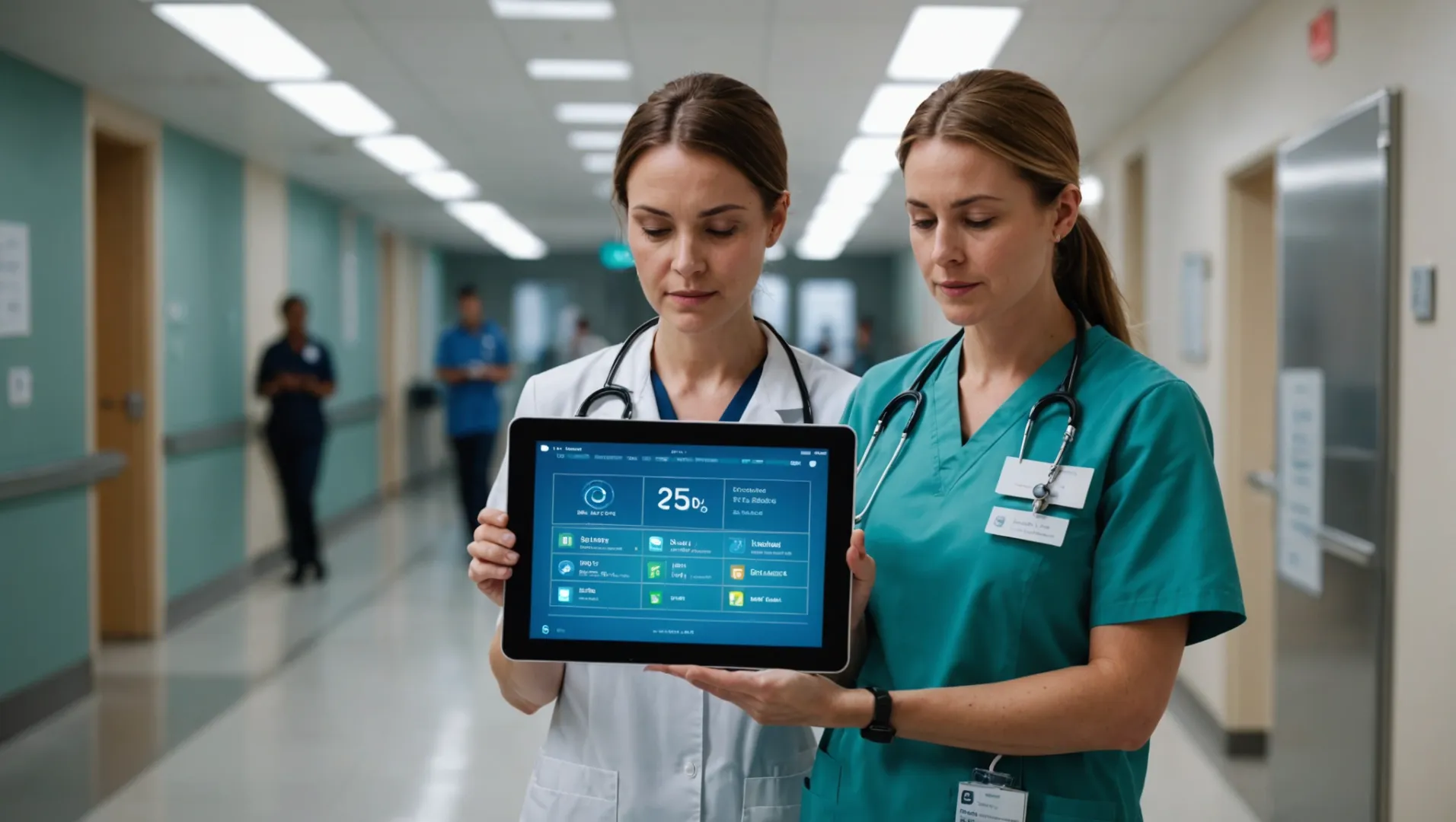
Le rôle des IdO dans le domaine de la surveillance de la qualité de l'air
L'internet des objets (IdO) révolutionne la gestion de la maintenance des purificateurs d'air en intégrant des capteurs intelligents qui surveillent en permanence la qualité de l'air intérieur. Ces capteurs fournissent des données en temps réel sur les particules, l'humidité et d'autres polluants, ce qui permet aux établissements de maintenir des conditions optimales. Grâce à ces données, les gestionnaires d'installations peuvent prendre des décisions éclairées quant au moment de l'entretien ou du remplacement des filtres, en veillant à ce qu'ils fonctionnent toujours au maximum de leurs performances.
Alertes opportunes et maintenance prédictive
L'un des principaux avantages de la IdO est la possibilité de recevoir des alertes en temps utile lorsque des travaux d'entretien sont nécessaires. Au lieu de dépendre de calendriers fixes ou d'inspections manuelles, IdO-permettent de prédire le moment où l'efficacité d'un filtre risque de diminuer en fonction des habitudes d'utilisation. Cette maintenance prédictive permet non seulement de prolonger la durée de vie des purificateurs d'air, mais aussi d'éviter les pannes soudaines qui pourraient perturber le fonctionnement d'environnements sensibles tels que les hôpitaux.
Étude de cas : L'expérience de HisoAir IdO Solutions
Des entreprises comme HisoAir ont été à l'avant-garde de l'intégration des technologies de l'information et de la communication (TIC). IdO dans les systèmes de purification de l'air. Ils ont mis au point des capteurs avancés qui permettent de connaître l'état des filtres, les besoins de remplacement et les performances globales du système. En adoptant cette technologie, les écoles et les hôpitaux peuvent réduire considérablement leurs frais d'entretien tout en garantissant un environnement plus sain aux élèves et aux patients.
| Fonctionnalité | Bénéfice |
|---|---|
| Contrôle en temps réel | Identification immédiate des problèmes de qualité de l'air |
| Alertes automatisées | Réduction de la dépendance à l'égard des contrôles manuels |
| Maintenance prédictive | Prolonge la durée de vie des filtres et réduit les coûts |
Perspectives d'avenir pour les IdO dans Purification de l'air
En tant que IdO évolue, son application à la purification de l'air devrait encore s'étendre. Les futurs systèmes pourraient offrir des analyses encore plus sophistiquées et s'intégrer à des systèmes plus larges de gestion des bâtiments pour une approche holistique du contrôle de l'environnement. Explorer IdO progrès des purificateurs d'air3 peut fournir des indications supplémentaires sur les améliorations potentielles en matière de maintenance et d'efficacité opérationnelle.
L'intégration de l'IdO réduit les vérifications manuelles des purificateurs d'air.Vrai
L'IdO permet une surveillance et des alertes en temps réel, ce qui minimise les inspections manuelles.
Les purificateurs d'air compatibles avec l'IdO ont une durée de vie plus courte.Faux
La maintenance prédictive de l'IdO prolonge la durée de vie des purificateurs d'air.
Où trouver des filtres de remplacement rentables ?
Il est essentiel de trouver des filtres de remplacement économiques pour maintenir la qualité de l'air dans les écoles et les hôpitaux sans dépenser trop.
Pour trouver des filtres de remplacement rentables, il faut s'adresser directement à des fabricants comme HisoAir, bénéficier de remises sur les achats en gros et choisir des modèles durables et à haute efficacité pour prolonger la durée de vie des filtres.

Achat direct du fabricant
L'une des stratégies les plus efficaces pour se procurer des filtres de remplacement rentables consiste à les acheter directement auprès des fabricants, tels que HisoAir4. En contournant les distributeurs de marques spécifiques ou les importateurs locaux, les établissements peuvent réduire considérablement leurs coûts. Les fabricants proposent souvent des remises en gros ou des services d'abonnement qui permettent de réduire encore les dépenses.
Comprendre l'efficacité et la longévité des filtres
Investir dans des filtres à haute efficacité ayant une durée de vie plus longue permet non seulement de réduire les remplacements fréquents, mais aussi de garantir une qualité d'air constante. Les filtres ayant un taux de distribution d'air pur (CADR) et la capacité de rétention de la poussière peuvent durer jusqu'à deux fois plus longtemps que les filtres standard, ce qui signifie moins de remplacements au fil du temps. Cela réduit à la fois la charge financière et l'impact environnemental liés à l'élimination des filtres usagés.
| Type de filtre | Durée de vie moyenne | Potentiel de réduction des coûts |
|---|---|---|
| Standard | 6-12 mois | Faible |
| Haute efficacité | 12-24 mois | Haut |
Effet de levier IdO pour une gestion efficace
Intégrer l'internet des objets (IdO) dans les purificateurs d'air permet de surveiller en temps réel la qualité de l'air et l'état des filtres. Ainsi, les filtres ne sont remplacés que lorsque c'est nécessaire, ce qui permet d'éviter les remplacements prématurés et d'optimiser le cycle de vie de chaque filtre. IdO peuvent fournir des alertes en temps utile et des analyses de données pour mieux planifier et budgétiser les besoins de maintenance.
Avantages de l'achat en gros
L'achat en gros peut être une décision financièrement judicieuse pour les institutions qui gèrent plusieurs purificateurs d'air. De nombreux fabricants offrent des remises significatives sur les commandes importantes, réduisant ainsi le coût unitaire des filtres de remplacement. Cette stratégie permet non seulement d'économiser de l'argent, mais aussi de s'assurer que les établissements disposent d'une réserve de filtres prête à l'emploi, évitant ainsi les temps d'arrêt dus aux ruptures de stock.
Pour maximiser les économies et l'efficacité, les gestionnaires d'installations doivent envisager toutes ces stratégies ensemble. En investissant dans des filtres durables et efficaces, en achetant directement auprès des fabricants et en utilisant les filtres de la IdO les écoles et les hôpitaux peuvent maintenir des normes élevées de qualité de l'air sans dépenser trop d'argent en frais d'entretien.
L'achat en gros permet de réduire considérablement le coût des filtres.Vrai
L'achat en gros permet souvent d'obtenir des remises, ce qui réduit les coûts unitaires.
La technologie IdO réduit la durée de vie des filtres à air.Faux
L'IoT permet de surveiller l'état des filtres, ce qui garantit des remplacements opportuns et efficaces.
Conclusion
En mettant en œuvre ces stratégies, les écoles et les hôpitaux peuvent garantir des environnements plus sains tout en conservant leur efficacité budgétaire.
-
Découvrez comment les achats directs auprès de HisoAir permettent de réduire les coûts de remplacement : Choisissez HisoAir pour son expertise inégalée en matière de purification de l'air, où notre engagement "Purification maximale, bruit minimal" répond aux normes les plus exigeantes. ↩
-
Découvrez comment chaque type d'appareil influe sur la sécurité et les coûts d'entretien : Les épurateurs d'air HEPA fixes montés au plafond dans les pièces sont généralement plus silencieux, plus efficaces et plus rapides que les unités de filtration HEPA portables. ↩
-
Restez informé sur les applications IoT de pointe améliorant l'efficacité des purificateurs d'air... : Les fonctionnalités avancées de ces nouveaux gadgets comprennent la surveillance en temps réel, l'automatisation, l'interaction avec les systèmes domestiques intelligents, et plus encore, en plus ... ↩
-
Découvrez les avantages de l'achat direct auprès de HisoAir pour réduire les coûts.. : Filtres True HEPA. Modèle : F040. Composition du filtre : papier filtre composite + ... sales@hisoair.com ; +86 138 0961 9940 ; +86 138 0961 9940 ; Office : Salle 712 ... ↩


